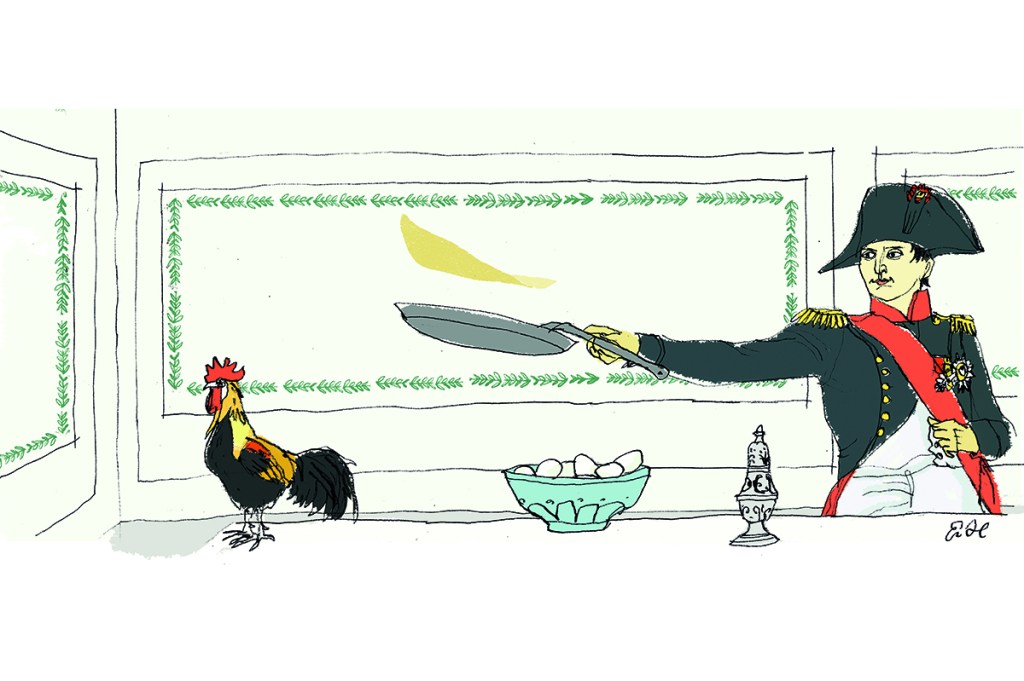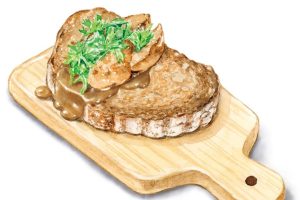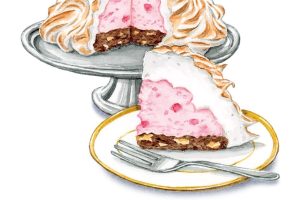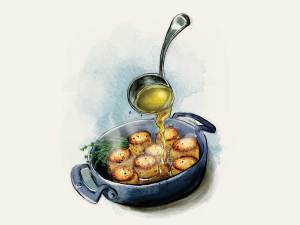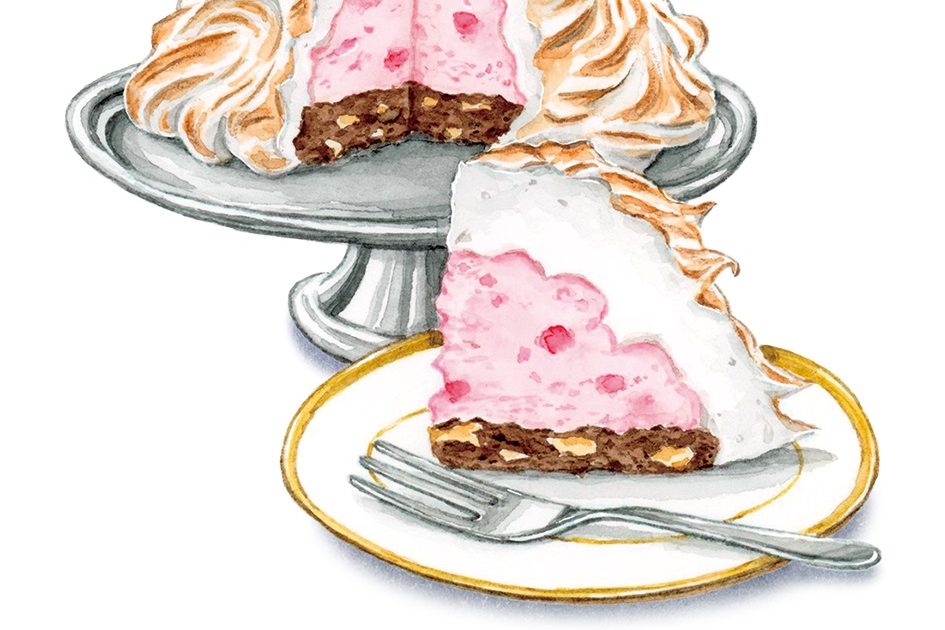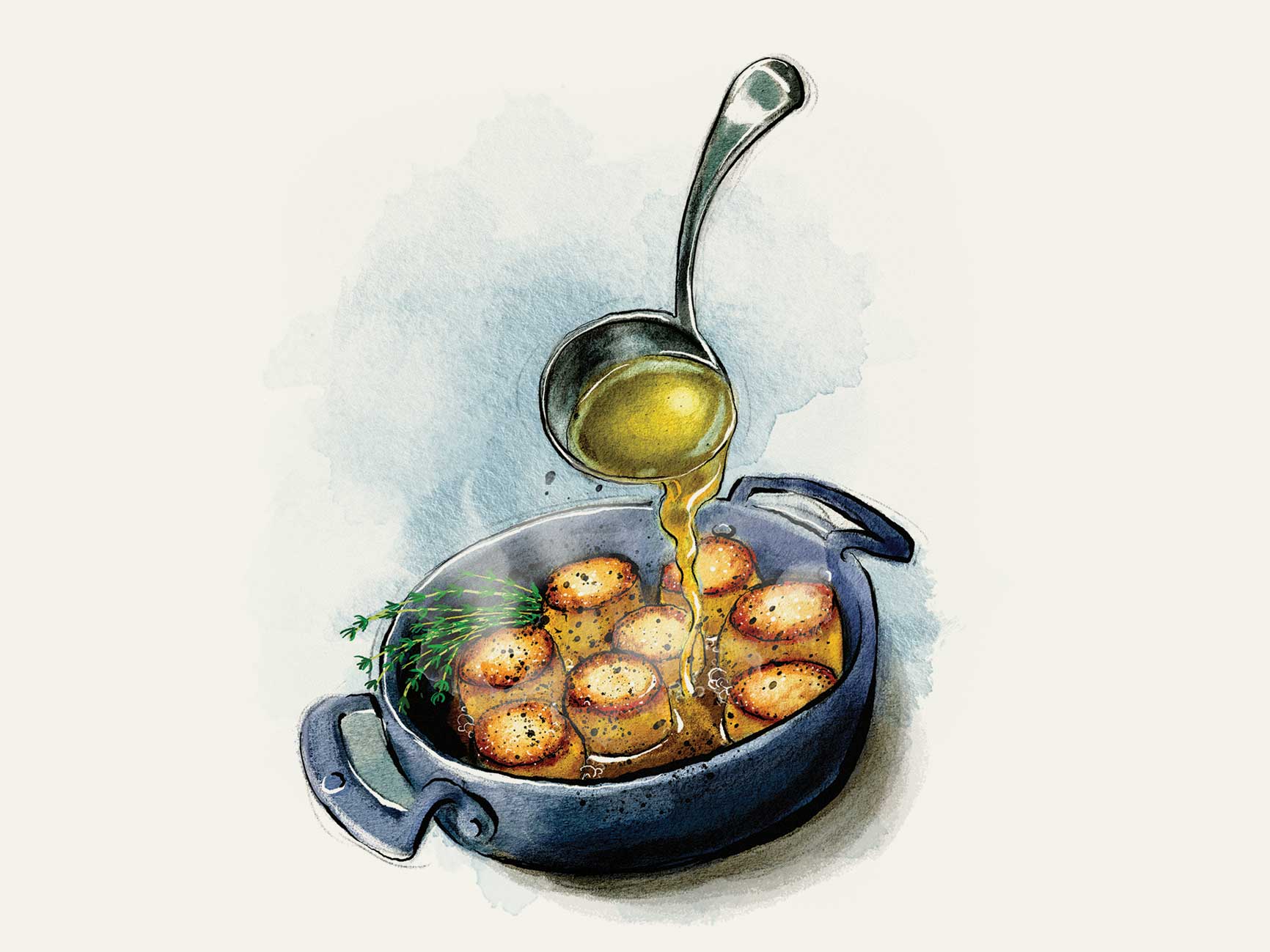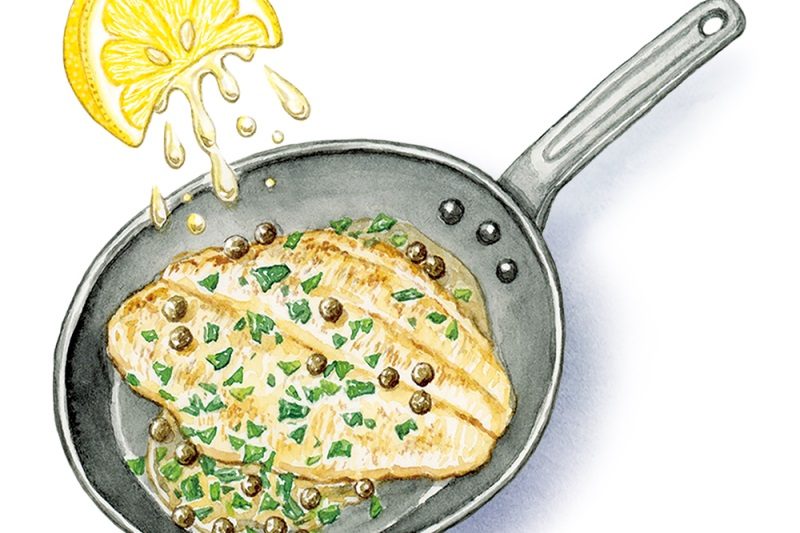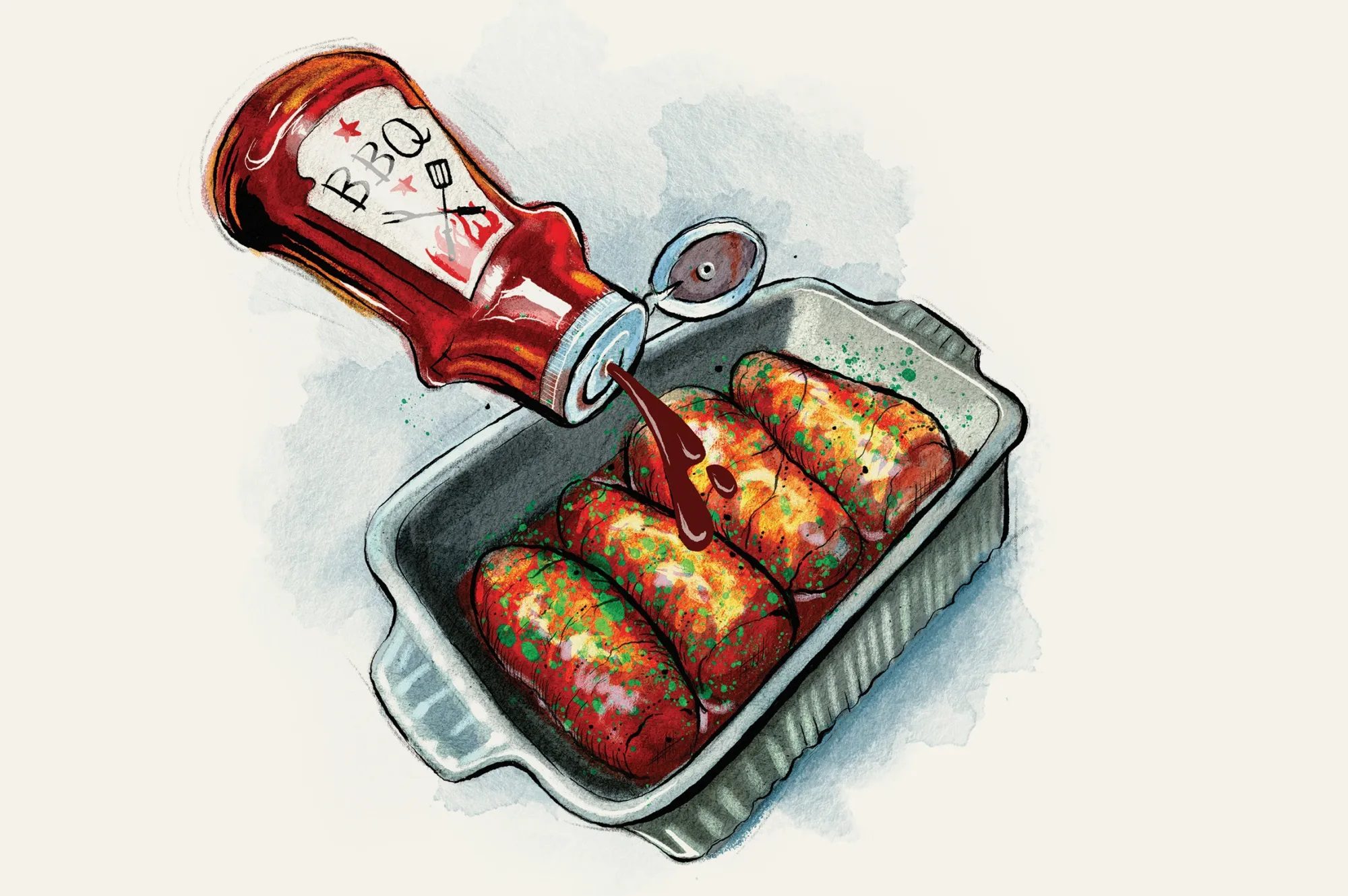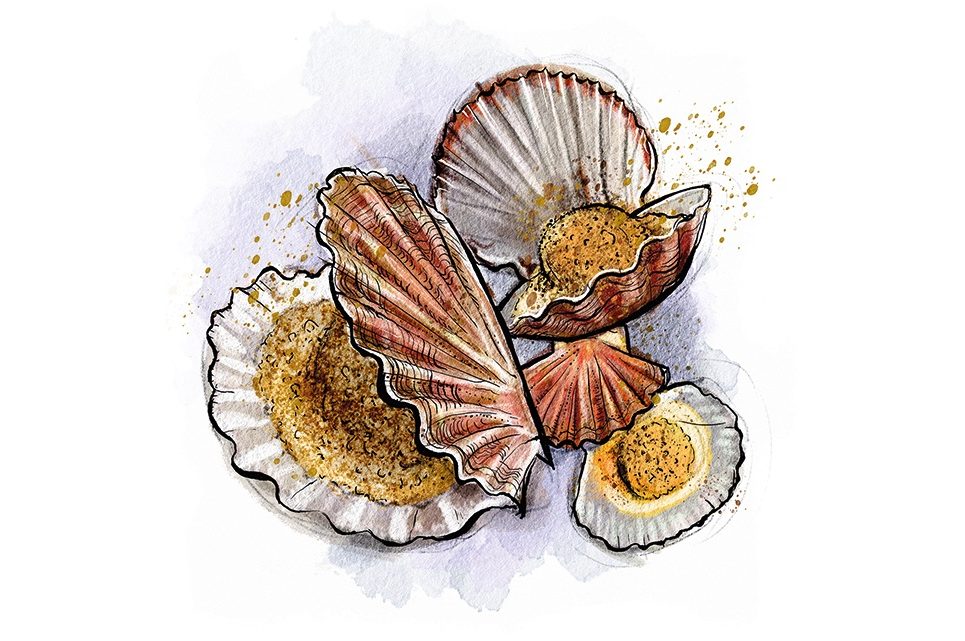Eat crêpes on Candlemas, enjoy a year of happiness, says a traditional French-Canadian proverb. Happiness isn’t as easy as eating crêpes on February 2, the cynics will sneer — but then, the cynics haven’t tried dark chocolate crêpe cake filled with hazelnut cream and garnished with golden spikes of candied hazelnut as per Martha Stewart’s show-stopping recipe, have they?
Of course they haven’t. Cynics don’t like sweets. But if you can trap a couple (good choices for bait include arugula, dandelion greens and Allen’s double-strength cleaning vinegar) and force-feed them chocolate crêpe cake, you’ll see the cynicism melting away like snow in April. They’ll begrudgingly become — well, maybe not romantics, but you might see their wry smirks turn into actual smiles, perhaps even with a few pearly whites showing. Chocolate makes everything better. Just make sure you use milk chocolate in the recipe — 85 percent cocoa bars are no good against cynicism.
Crêpes and their pancake cousins are, in anglicized parts of the world, a Shrove Tuesday tradition because of the old custom of using up butter, eggs and milk before the fasts of Lent. But there’s no reason inhabitants of a continent that includes Louisiana and Quebec shouldn’t dabble in a little Gallicism from time to time — and the French celebrate Candlemas on February 2 with lighted candles in church and crêpes, golden and round as the sun, at home.
There’s a superstition that if you can successfully flip your Candlemas crêpe by tossing it in the air and catching it in the pan, you will have luck all year. A possibly apocryphal tale of Napoleon Bonaparte has him flipping crêpes in the kitchen of his mansion at Malmaison on Candlemas of 1812. Napoleon must have had a deft wrist, for he tossed crêpe after crêpe successfully, declaring that each one was another battle won for his upcoming Russian campaign. But he missed catching the fifth, which landed on the floor and was ruined. During the disastrous retreat from Moscow that ended the campaign, he is said to have told Marshal Ney, “It was that fifth crêpe…”
You’ll need more than four perfect crêpes for a crêpe cake, but aerial tosses aren’t mandatory (unless you happen to be the leader of a major world power, in which case you owe a live-TV crêpe session to the public). The principle of the cake is simple: a stack of sweet crêpes layered with filling. The flavors absorb into the crêpes, and when the cake is sliced, the many thin layers look wonderful.
You don’t need to be an expert pastry chef to introduce variations. The crêpe cake can be trendy (green matcha tea crêpe cake!), a new spin on a classic (tiramisu crêpe cake) or just plain delicious (lemon crêpes with mascarpone filling). You can leave the cracked edges out for a raw-silk, informal finish, or you can smooth them over with glaze or icing for a posh presentation. You can play with flavor contrasts and color contrasts between the crêpes and the filling. Martha Stewart’s hazelnut chocolate spin on the crêpe cake is dramatic and elegant, a fitting dessert for a special occasion. While it takes time to prepare, it’s nowhere near as hard as it looks.
The secret to the chocolate crêpes lies in the batter. Crêpe batter is supposed to be much runnier than pancake batter, and Martha has us pour it through a sieve to get rid of any lumps. After that, chefs always say, the batter should rest for a few hours in the refrigerator, ideally overnight. The most important reason for this is to allow the gluten to relax. When you make bread, a strong, glutinous dough will trap lots of little gas bubbles released by the yeast, resulting in a beautiful crumb. Kneading strengthens the glutinous strands by stretching them repeatedly. But for crêpes we want a light and delicate texture without elasticity. When the batter rests, the gluten stretched by mixing gradually relaxes. Light, lacy crêpes are the result.
The size of pan you use will determine the final diameter of the cake. Martha recommends an 8” pan; it’s nice not to go any wider, since its height and narrowness give it a chic, Givenchy look. Don’t put too much oil or butter in the pan, because when the crêpe batter is poured in, excess fat will prevent the crêpe from cooking evenly. A French cook once showed me how to put a slice of peeled raw potato on the end of a fork, dip it in a tablespoon of oil and rub it over the surface of the crêpe pan. This way only the bare minimum is added.
Next is the hazelnut filling, which is essentially a buttercream. The hazelnuts are toasted and ground in a food processor; egg whites are whisked with sugar over simmering water on the stove, then beaten until stiff peaks form. Butter, processed hazelnuts, vanilla and salt are gradually added; last of all, whipped cream is folded in.
Now for playing architect. Choose your cake plate and use a crêpe as a foundation. Layer hazelnut filling and chocolate crêpes until everything you have is used up. Save a nice-looking crêpe for the top (any misshapen ones can be concealed in the middle). I used a couple of wooden skewers to reinforce the whole stack. It goes in the refrigerator when you’re done, where the buttercream will firm up and keep the cake reasonably strong.
Once it’s chilled, Martha coats the cake in a shiny chocolate glaze and tops it in candied hazelnuts. A good half the dramatic effect of this cake is obtained by the candied hazelnuts. Whole hazelnuts are toasted, and a sharp, thin wooden skewer stuck into each (it’s a good idea to toast some extras, because a few hazelnuts will split apart). You boil sugar and water to make caramel; this is a bit tricky and there is no shame in burning one or two batches and starting over. It’s only sugar, after all, and we’re supposed to be getting rid of sweets before Lent! The hazelnuts are dipped in the syrup and the skewers wedged under a cutting board on the edge of the counter, with a cookie sheet on the floor below. The hot candy dripping down from the nut hardens into a tapering golden thread. When they’ve had time to cool, break the threads off at a few inches long, and carefully pull out the skewers. The golden spikes will shoot riotously up on top of your cake like flash-frozen fireworks.
Since Candlemas is the feast of light, what could be more appropriate? Candlemas crêpes, round, golden Candlemas crêpes announce, with the groundhog coming up to check his shadow, that long, luminous days will come again. Fireworks of golden candy recall the light to enlighten all peoples and the candles borne in their thousands of millions on this day throughout history. The procession wends its way through the alternately dark and bright passageways of time, all the way from the Temple of Jerusalem and the canticle of Simeon — the inspiration for so much wonderful poetry and music; have you heard Voces8 interpret Rachmaninov’s translucently gorgeous setting? — down the years until today, when Candlemas and the crêpe cake tell us that summer is nigh.
This article was originally published in The Spectator’s February 2022 World edition.



